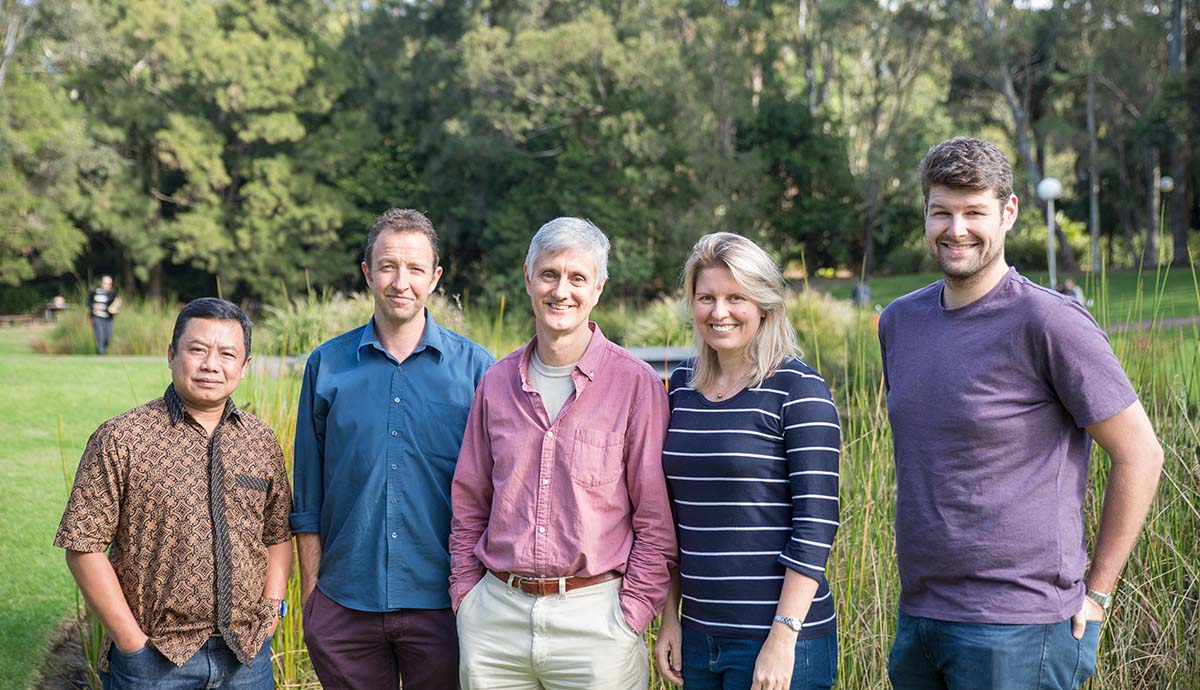June 22, 2017
New $46M national research centre to explore Australia’s human and environmental history
University of Wollongong to host ARC Centre of Excellence for Australian Biodiversity and Heritage
Australia’s distinctive character is captured in its unique natural and human history. Yet much of this story remains unknown. How did Indigenous Australians and our endemic fauna and flora respond and adapt to periods of climatic stress, and what lessons can be learnt that will help our environment and society in the future?
Today (Thursday June 22) an international research team headquartered at the University of Wollongong (UOW) begins a seven-year, $45.7 million quest to shed light on Australia’s iconic biodiversity and Indigenous heritage.
The Minister for Education and Training, Senator the Hon. Simon Birmingham, will officially launch the Australian Research Council (ARC) Centre of Excellence for Australian Biodiversity and Heritage (CABAH) at Parliament House this morning.
The first continental-scale project of its kind in the world, CABAH will pioneer a new understanding of the natural and human history of Australia, Papua New Guinea and eastern Indonesia from 130,000 years ago until European arrival.
CABAH will take an innovative, transdisciplinary approach, bringing world-leading researchers from science, technology, engineering and mathematics disciplines (spanning the natural sciences) together with scholars from the humanities and social sciences, such as archaeology and Indigenous studies.
The Centre will be led by Distinguished Professor Richard (Bert) Roberts, an ARC Laureate Fellow and Director of UOW’s Centre for Archaeological Science.
Professor Roberts said Australia’s environmental history and Indigenous heritage are fundamental to understanding the story of humanity’s spread across the globe, adaptations to changing environments and interactions with past landscapes and ecosystems.
“Australia boasts an array of fauna and flora that exists nowhere else on Earth,” Professor Roberts said.
“It has some of the world’s most ancient landscapes and deeply weathered and depleted soils, and is home to Indigenous peoples whose genetic and cultural history extends back many tens of millennia.
“But we still do not have answers to some of the most fundamental questions about this continent or its people, such as the timing and routes of their dispersal around the continent, the timing and extent of major changes in climate and fire regimes, or how landscapes, plants and animals responded to the altered conditions.”
While gaining greater knowledge of Australia’s extraordinary history is important in its own right, CABAH is as much about the future as it is about the past.
A better understanding of the effects of previous periods of climate change on the distribution of Australia’s natural resources will help the nation adapt more successfully to future environmental challenges.
CABAH will also contribute to Australia’s future through a training program to foster young researchers, with an emphasis on Indigenous participation and support for female researchers.
A comprehensive science communication, education and public engagement program will take CABAH’s insights and discoveries to the wider community, inspiring young minds and encouraging future generations of Australian researchers.
UOW Senior Professor Amanda Lawson, a Deputy Director of the new Centre, said CABAH would bring educational materials generated from its research into Australian schools.
“We aim to inspire all Australians young and old, including in the regional communities where the research will be conducted, in the processes and excitement of scientific discovery,” Professor Lawson said.
“Our partners include world leaders in public engagement, such as the Natural History Museum of Denmark and the Natural History Museum in London as well as the Queensland Museum and Australian Museum closer to home.”
Minister Birmingham said he looked forward to seeing the results of the important research planned for CABAH.
“The Turnbull Government is proud to back the Centre’s work because it has the potential to add to better environmental understanding and have a positive impact on the lives of Australians.”
CABAH is funded by a $33.75 million grant from the ARC, $1 million from the NSW Government, and $11 million from participating universities, museums and other organisations. The funds will support at least 40 new research positions and more than 50 new research students over the life of the Centre.
To create CABAH, eight Australian universities – the University of Wollongong, James Cook University, the University of New South Wales, the Australian National University, the University of Adelaide, Flinders University of South Australia, Monash University and the University of Tasmania – have joined forces with a range of partners in Australia, including the Queensland Museum, the Australian Museum, the South Australian Museum and the State Library of New South Wales.
CABAH also has strategically important international partners in Papua New Guinea, Indonesia, France, Germany, Denmark, the United Kingdom and the United States of America.
